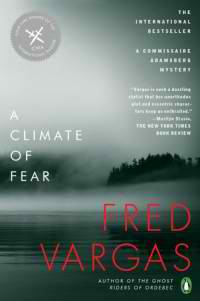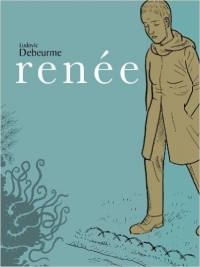A Climate of Fear by Fred Vargas
 Wednesday, April 5, 2017 at 9:21AM
Wednesday, April 5, 2017 at 9:21AM 
Published in France in 2015; published in translation by Penguin Books on March 7, 2017
A Climate of Fear contains the memorable line, “Please, fetch me some horse manure. I want it now.” What more could a reader ask?
Alice Gauthier, with some help she never learns about, posts a letter just before she dies. Her death is regarded as a suicide, but the retired maths teacher seems an unlikely candidate to take her own life. She drew a sign before she died, and Commandant Adrien Danglard of the Serious Crime Squad is called upon to puzzle out its meaning due to his encyclopedic knowledge of obscure facts.
Tracking down the letter leads Danglard and Jean Baptiste Adamsberg and a few other Parisian crime investigators to another apparent suicide where the same strange sign appears, as well as an suspicious deaths in Iceland ten years earlier. The investigation begins with a myth about an Icelandic island where a warm stone is said to offer eternal life. There does, we eventually learn, seem to be something creepy about the island, where visitors seem more likely to find eternal death.
The investigation takes a twist when evidence suggests that the victims were studying the writings of Robespierre, sending the detectives to a club where the government of Robespierre is reenacted. Some members seem to have infiltrated the club to spy on others. Some members are secret descendants of people who were guillotined during the Revolution, and who may be pursuing an agenda of their own.
The various characters in the club get a bit carried away, which I might not find credible except that Americans get a bit carried away with their Civil War reenactments, so perhaps the French are no different in the allegiance to one side or the other in their colorful history.
Fred Vargas has a background in history and archeology, both of which play a role in A Climate of Fear. In fact, I learned considerably more about Robespierre than I really needed to know. Still, the detail with which Vargas reconstructs French history is also evident in the detailed plot, which ties together multiple killings in an odd conspiracy — but then, all conspiracies seem odd to people who have not embraced them.
A Climate of Fear moves at a sedate pace, taking time to develop characters and (mostly) background. The pace might be a bit too sedate, but that’s preferable to modern thriller writers who, sacrificing content for speed, don’t want to burden readers with sentences of more than five words. The pace does pick up a bit at the end, before the traditional information dump in which Adamsberg explains the plot and ties the storylines together.
The police characters have obviously been developed throughout the series (this is the first Adamsberg novel I’ve read) and their personalities are clearly established. The novel might have been tighter, but the complex mystery should appeal to readers who enjoy misdirection and the opportunitiy to unravel complex mysteries.
RECOMMENDED
 TChris |
TChris |  Post a Comment |
Post a Comment |  France,
France,  Fred Vargas in
Fred Vargas in  Thriller
Thriller 


